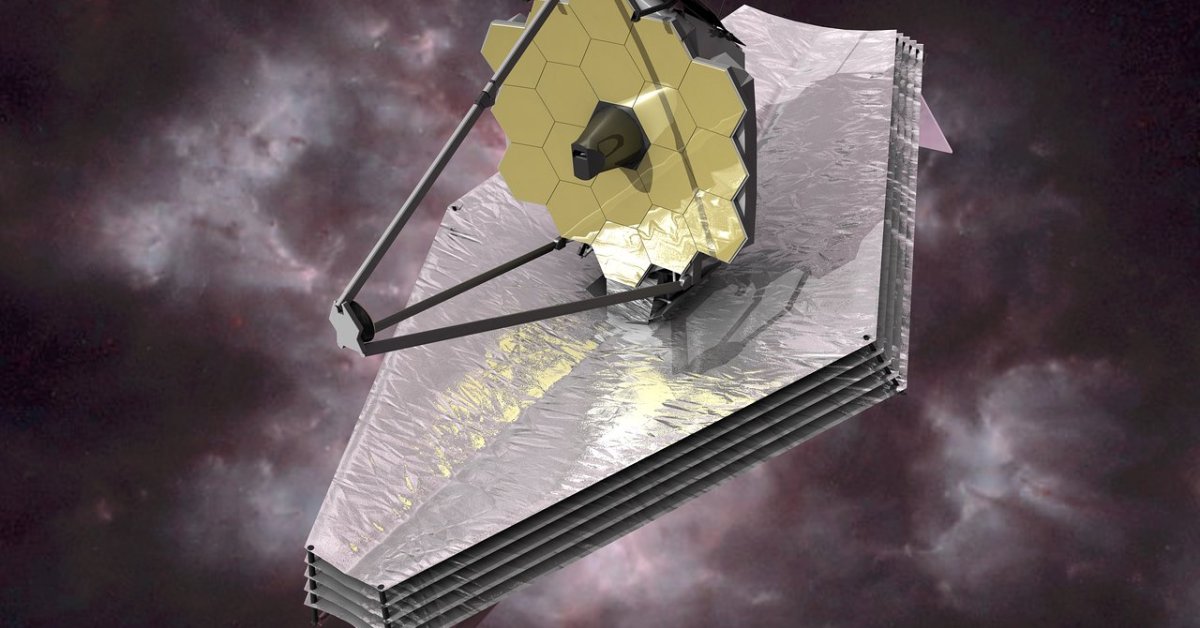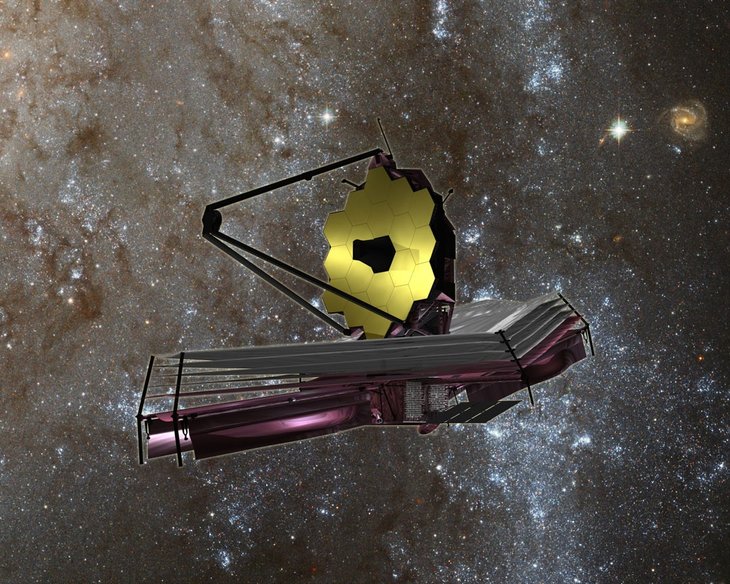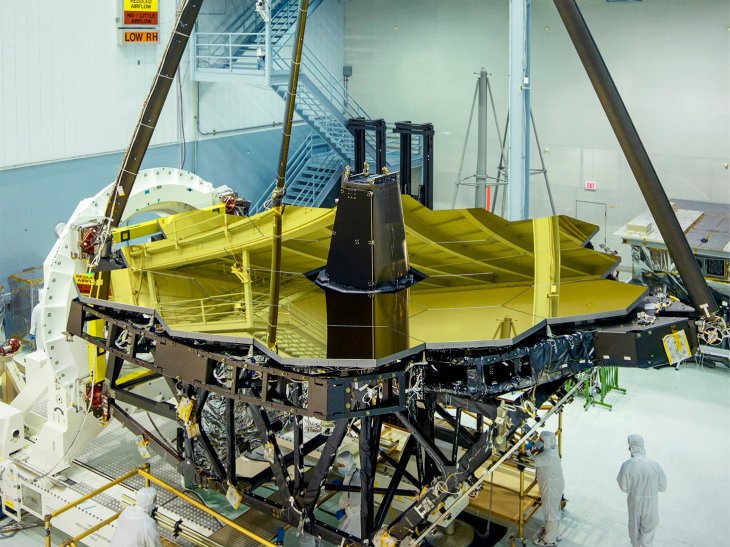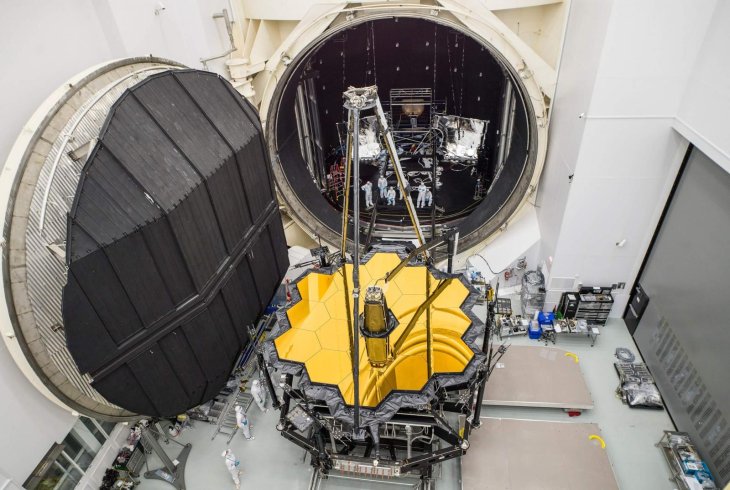NASA's Giant Telescope Will Allow Us Peer Back Into The Times Of Dinosaurs
Aadhya Khatri - Mar 10, 2020

The giant telescope will orbit from the height of 1.5 million kilometers from the Earth. That means it can peer 13.7 billion years into our planet’s past
- The Earth Is At Its Hottest It Has Ever Been In At Least 12,000 Years
- When Will Earth Lose All Of Its Energy And Cool Off?
- The Moon Used To Protect Earth With Its Magnetic Field, NASA Discovers
After 24 years of work and several delays, the $9.6 billion James Webb Space Telescope is now at its final stage of testing before it can be transferred to the Guiana Space Center to be launched in March, 2021.
The endeavor is the joint effort of thousands of engineers and scientists from 24 nations.
The giant telescope will orbit from the height of 1.5 million kilometers from the Earth. That means it can peer back 13.7 billion years into our planet’s past. From when the Big Bang happens and the galaxies were formed. It will also analyze the exoplanets around other stars to see if they can support life.

At the very start of our universe, it consisted of mostly helium and hydrogen before other elements were formed. Stars had the size 300 times bigger than the Sun and could live for only a few millions years before they died in giant supernovas.
The telescope is designed to identify traces of these huge explosions’ infrared light. When scientists analyze these traces, they can have a general idea of what the stars are made of and the environments they are made in.
Another purpose of the telescope is to find an Earth-like planet to ensure that humans have a place to live after the Sun dies in after 5 billion years
The JWST (James Webb Space Telescope) was first considered in 1966. Back then, they need 10 technologies that were ahead of their time. What they needed at that time included ten sun shields the size of a tennis courts to protect the telescope from the Sun’s radiation and cool down the JWST, and a 21.3-foot diameter mirror that can work as one even when broken into 18 parts. The whole telescope must be able to fold up and fit into an Ariane rocket to send it all the way.

To observe objects from billions of light years away, we need a mirror with a size that allows it to gather enough light no matter how faint the object is. That of the JWST is seven-times larger than Hubble Space telescope’s, allowing it to see object hundreds of times fainter than what space and ground telescopes can.
The mirror was made of beryllium, a metal that is lighter than aluminum but stronger than steel. It was then coated in a very thin layer of 24K gold, which means it will reflect 98% of infrared light.
Once the telescope is in orbit, the next six months will be dedicated to conducting 500 different activities to make it operational. After that, all of the science and analyzing can begin.

The JWST carries an amount of hydrazine fuel to keep it functioning for 14 years, under careful management. A team is working to devise a robotic fueling plan to extend that time even more.
The team working on JWST are very excited at the prospect of the telescope coming together and being launched. Once it is in orbit, we have reason to believe that we can learn much more about the history of our own planet as well as exoplanets that have the potential to support life.
>>> NASA Released A New Black Hole Simulation And It's Mesmerizing
Featured Stories

Features - Jul 01, 2025
What Are The Fastest Passenger Vehicles Ever Created?

Features - Jun 25, 2025
Japan Hydrogen Breakthrough: Scientists Crack the Clean Energy Code with...

ICT News - Jun 25, 2025
AI Intimidation Tactics: CEOs Turn Flawed Technology Into Employee Fear Machine

Review - Jun 25, 2025
Windows 11 Problems: Is Microsoft's "Best" OS Actually Getting Worse?

Features - Jun 22, 2025
Telegram Founder Pavel Durov Plans to Split $14 Billion Fortune Among 106 Children

ICT News - Jun 22, 2025
Neuralink Telepathy Chip Enables Quadriplegic Rob Greiner to Control Games with...

Features - Jun 21, 2025
This Over $100 Bottle Has Nothing But Fresh Air Inside

Features - Jun 18, 2025
Best Mobile VPN Apps for Gaming 2025: Complete Guide

Features - Jun 18, 2025
A Math Formula Tells Us How Long Everything Will Live

Features - Jun 16, 2025
Comments
Sort by Newest | Popular